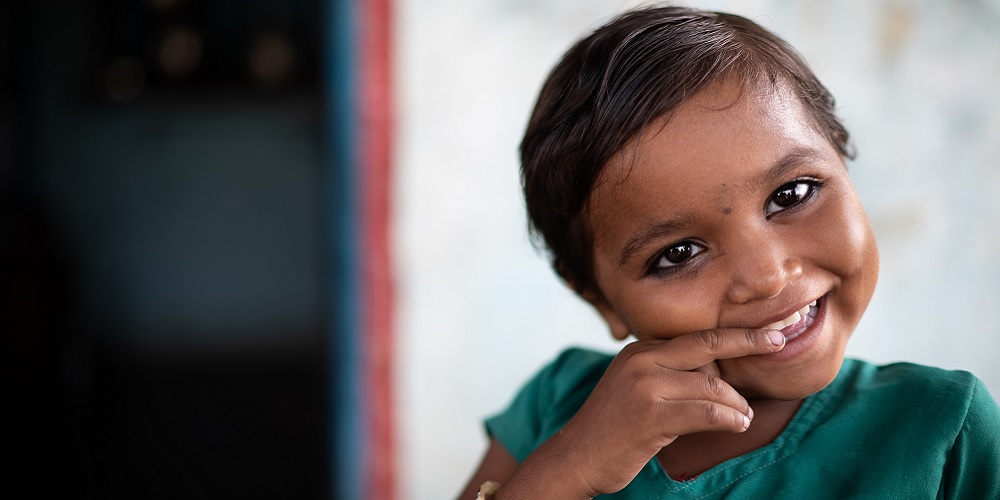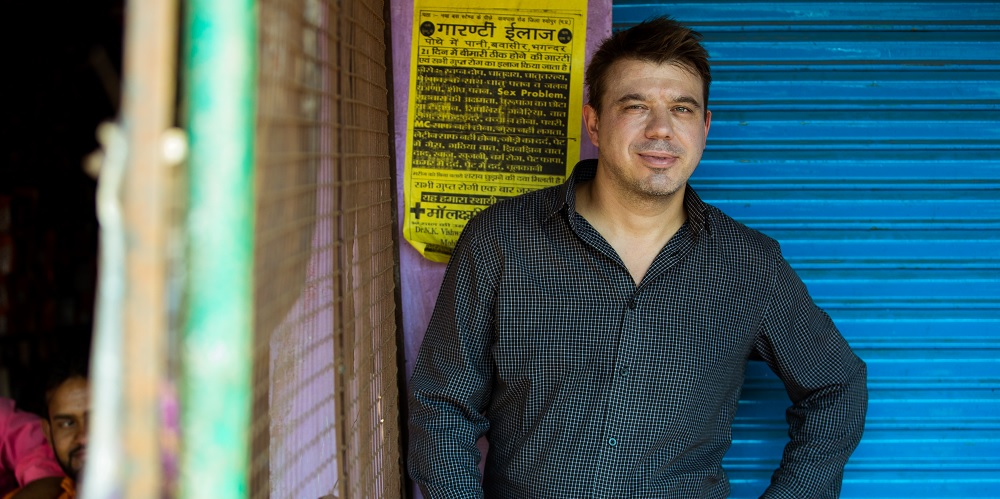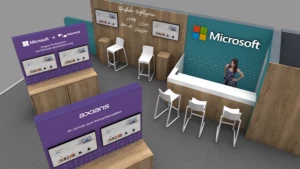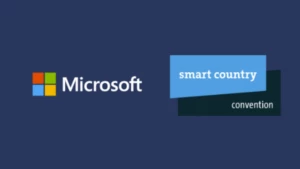
Today, Welthungerhilfe relies on innovation projects – and Munich Re could also benefit from them
Welthungerhilfe, one of the largest private aid organizations in Germany, is relying on innovation to fight hunger. The organization is currently developing a mobile app that records children in areas affected by hunger with 3D scans. The aim of the “Child Growth Monitor” is to recognize whether the children are malnourished and need help.
You can help children suffering from malnutrition by donating to Welthungerhilfe.

Welthungerhilfe manages these kinds of innovation projects via its Innovation Unit. I met the Head of Innovation, Jochen Moninger, in a workshop in January of this year. That was the start of a deep ongoing conversation. Microsoft has been involved in this project since January, because the app is based on worldwide Big Data analyses with Artificial Intelligence.
In the course of this project we even met in India. I was able to have a very interesting conversation with Moninger about how technological innovation can advance important development aid projects.

Susanne Mehrtens: Mr. Moninger, since when has Welthungerhilfe had a department for innovation?
Jochen Moninger: Since January 2016. We have come to realize that innovation in the private sector is a successful concept. We can also learn from this in order to get the most from our funding and our work.
Susanne Mehrtens: What are your most important starting points?
Jochen Moninger: Above all, we want to develop new business models and enable the scaling of sustainable solutions. Our local development cooperation is excellent. But we often fail to scale successful concepts. Therefore, we have to create “Branded Products” that can be scaled.
Susanne Mehrtens: What role does the Child Growth Monitor play in this context?
Jochen Moninger: This app is our most important project. In most areas where we work, an average of 40 percent of children suffer from malnutrition. Meaning that a child suffers from an unbalanced diet in which they lack certain vital nutrients. But it’s hard to know exactly who that is. Not even a child’s mother knows that for certain.
Here, the Child Growth Monitor can help us use the 3D scan to identify those children who need the most support. This would make our aid much more efficient.
Susanne Mehrtens: What is the status of the ”Child Growth Monitor” today?
Jochen Moninger: A prototype exits. Its frontend is stable and records data. Twelve teams are equipped with devices and trained to record data in the field.

Susanne Mehrtens: How would you like to further develop the app?
Jochen Moninger: The crucial point is the weight detection. In order to train the algorithm behind the app, hundreds of thousands of 3D scans will probably be required. Because it is so much data and that data is so complex, we need state-of-the-art technologies. That’s why we have chosen Microsoft as our partner. The Artificial Intelligence services in Microsoft Azure are innovative and we need to be able to use them worldwide.
We transfer the collected data to Azure so that they are available to nutritionists and IT specialists. They evaluate the data with deep learning models from Azure’s AI services and feed it back into the app. In this way, the application continues to learn.
Susanne Mehrtens: This kind of development requires considerable investment.
Jochen Moninger: We are in the process of acquiring funds. We are in the final round of some start-up tenders. I hope to get funding again, amounting to 100,000 or 150,000 euros.
But one project alone won’t really get us far. Our goal is to launch the Child Growth Monitor as a Social Business in early 2019.
Susanne Mehrtens: What do you mean by “Social Business”?
Jochen Moninger: If we want a relevant number of children to be scanned by 2030 to detect malnutrition, I need a team to run the monitor until 2030. This is what we call Social Business.
Susanne Mehrtens: Are you also considering partners from the private sector?
Jochen Moninger: Yes, we can also imagine including partners from the private sector. They could contribute capacity or co-finance active participation with the aim of scanning three million children each year from 2021 onwards. By 2030 it should be a total of 55 million children.
Susanne Mehrtens: Is Munich Re a potential partner?
Jochen Moninger: Absolutely. The program is also interesting for Munich Re. This is because the app delivers reliable data from developing countries. From this, Munich Re could develop new risk transfer concepts for development aid organizations.
Welthungerhilfe was also a partner in the second DataThon, which Munich Re organized in Munich last weekend. The title of this Social Impact DataThon was “Identifying and Combating Hunger Risks More Effectively with Artificial Intelligence”. Big Data experts, analysts and developers were invited to find innovative solutions for the AI algorithm in Munich Re’s LAB.
Microsoft supported this DataThon with the Azure Cloud and key AI and Big Data services. In just 48 hours, interesting solutions are created that allow an automatic assessment of the reliability of the AI results and a new method.
In this case study, you can read about how Welthungerhilfe is driving the development of the Child Growth Monitor with the help of Big Data and Artificial Intelligence.
You can help children suffering from malnutrition by donating to Welthungerhilfe.
Also read an article by Susanne Mehrtens reflecting her personal impressions from the Indian state of Madhya Pradesh: When artificial intelligence comes alive
In another article, you will learn how big data and artificial intelligence can be used in development aid, and how risk transfer concepts for aid organizations are made possible.





